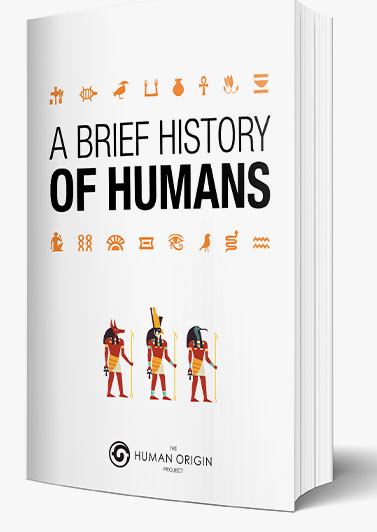With a population of 16 million, and home of the world famous Angkhor Wat Temple, Cambodia holds special ancient traditions today. Their practices include a time-keeping system called the Khmer Calendar.
However, as you probably already know, it’s far from the only type of calendar in existence. Across the centuries, different groups of people have used different ways of keeping track of the date, based on what they observe in the natural world around them, particularly up in the stars.
One especially unique example, of course, is the Khmer Calendar system. This calendar system is the one used in Cambodia, a predominantly Buddhist country. And while it does share some similarities and differences with the Gregorian calendar, it also has many things in common with another popular type of calendar.
What is the Khmer Calendar?
The Khmer traditional calendar system is categorized as a lunisolar calendar system. That means that it consists of both a lunar calendar and a solar calendar. However, the latter tends to see more use than the former. Interestingly enough, the Khmer calendar is also known as Chhankitek, which means “lunar calendar.”
There are a number of significant differences between the Gregorian calendar and the Khmer calendar, which will all be touched upon below.
Like the Gregorian calendar, the Khmer calendar follows the 12-month scheme, and also counts days following the same format. However, one of the key differences here is that the Khmer calendar, which is used mainly by Cambodians, uses the Buddhist Era as its demarcation line for years, instead of the Common Era. That’s because a significant chunk of Cambodians are Buddhists.
Following Common Era (standards and to give you a better idea of how it works, the Buddhist Era (BE) formally started upon Gautama Buddha’s death in 544 BCE.
The Astronomical Basis of the Khmer Calendar
The Khmer calendar follows both the movement of the moon and the solar year. This is to guarantee that the seasons won’t drift, and will remain consistent with the time that passes between them in nature. It’s been used by farmers who depend on accurate timing and weather readings to ensure a good harvest for that year. However these cycles had great importance across all calendar systems. These include the Chinese Calendar, Hindu Calendar, Egyptian and Mayan Calendars.
Instead of leap years with one extra day, an additional month or day is added to a particular year, making up for the discrepancy between the number of days in a lunar year and the number of days in a solar year.
Khmer Astrology and Zodiac Signs
People who follow the Khmer calendar use a system of 12 animals to identify the Cambodian year: rat (Jute), ox (Chlov), tiger (Karl), rabbit (Thos), dragon (Rorng), snake (Masagn), horse (Momee), goat (Mokay), monkey (Voke), rooster (Roka), dog (Jor), and pig (Koar). The animals match the Chinese zodiac. Take note that the Khmer names of each animal is not its translation, but a special name created for the year.
| Gregorian | Date | Animal | Day of the week |
| 2019 | April 13 | Pig | Saturday |
| 2020 | April 13 | Rat | Monday |
| 2021 | April 13 | Ox | Tuesday |
| 2022 | April 13 | Tiger | Thursday |
| 2023 | April 13 | Rabbit | Friday |
| 2024 | April 13 | Dragon | Sunday |
| 2025 | April 13 | Snake | Monday |
| 2026 | April 13 | Horse | Tuesday |
| 2027 | April 13 | Goat | Thursday |
| 2028 | April 13 | Monkey | Saturday |
| 2029 | April 13 | Rooster | Sunday |
| 2030 | April 13 | Dog | Monday |
Much like Chinese astrology, Khmer zodiac signs have unique traits reflected in the people born under their respective years.
For example, according to the Khmer calendar, 2019 is the year of the pig, which means that anyone born this year is expected to possess the traits normally associated with Koar.
Additionally, the 12-animal system follows a ten-year numeric cycle, making it easier for you if you want to manually determine which animal was the designated animal for, say, 1988.
Similarly, the Khmer solar months correspond to the months on the Gregorian calendar.
See the table below.
| Month | Sanskrit | Number of Days | Zodiac Sign |
| January | Makara | 31 | Capricorn |
| February | Kumbha | 28/29 | Aquarius |
| March | Mina | 31 | Pisces |
| April | Mesha | 30 | Aries |
| May | Vrisha | 31 | Taurus |
| June | Mithuna | 30 | Gemini |
| July | Kartaka | 31 | Cancer |
| August | Simha | 31 | Leo |
| September | Kanya | 30 | Virgo |
| October | Tula | 31 | Libra |
| November | Vrischika | 30 | Scorpio |
| December. | Dhanus | 31 | Sagittarius |
The Khmer Lunar Months
So now that we know what the solar months are — what, then, are the lunar months?
A lunar month lasts for about 29.5 days, and a lunar years is approximately 354 days. Due to the discrepancy between the total length of time of a lunar year versus that of a solar year, the Khmer calendar adds an extra month every two to three years.
The beginning of a lunar month (or Reak) under the Khmer calendar is marked by a new moon. Mekasay has 29, days until the next one, for instance, while Bos has 30. A leap year may have either an extra month or an extra day. It may sound confusing at first, but it just takes some getting used to.
If a year has an extra day (a total of 355), it is known as Chhantrea Thimeas or Adhikavereak. Meanwhile, a year with an extra month (for a total of 384 days) is called Adhikameas. Last but not the least is the extra leap-day, which happens in Jais (30 days instead of 29).
In the Khmer system, leap months can only happen during the month of Ashad, and not in any other month. If your year has an extra month (Adhikameas), then it will certainly fall under either Badhamasad or Thutiyasad. Take note that on just like on the Chinese calendar, no year can have both an extra day and an extra month. It’s just one or the other.
See the table below for the list of lunar months and their corresponding number of days.
| Sanskrit | Number of Days | ||
| 1 | Mekasay | Mekasay | 29 |
| 2 | Bos | Pausha | 30 |
| 3 | Meak | Magha | 29 |
| 4 | Phagaun | Phalguna | 30 |
| 5 | Chaet | Chaitra | 29 |
| 6 | Vesak | Vaisakha | 30 |
| 7 | Jais | Jyaishtha | 29 or 30 |
| 8a | Ashad | Ashadha | 30 |
| 8b1 | Badhamasad | Ashadha I | 30 |
| 8b2 | Thutiyasad | Ashadha II | 30 |
| 9 | Srap | Sravana | 29 |
| 10 | Phutrobot | Bhadrapada | 30 |
| 11 | Aduj | Asvina | 29 |
| 12 | Kadhek | Kartika | 30 |
Khmer days, Religious Festivals and Calculating the New Year
When counting days, the Khmer calendar uses the Keit and Roaj units. From one to fifteen days, Keit covers the moon’s waxing phase, then counts from a new moon to a full moon. Roaj, on the other hand, pertains to the moon’s waning phase (from full moon to new moon).
When it comes to celebrating the Khmer New Year, a new system has been adopted since the end of the Angkor era. Long ago, the New Year began with the month of Mekasay, which coincided with the tenth month on the Chinese calendar (and either December or January on the Gregorian calendar). The celebration used to last an entire month (half of it prior to the New Year date, half of it after).
However, ever since Cambodians started adopting both the lunisolar and solar calendar systems, the Khmer system had to adapt as well.
Now, the Khmer New Year coincides with April on the Gregorian calendar (typically the 13th or 14th), since that’s the time when farmers no longer need to worry about completing their farming tasks, and are free to celebrate the New Year. Another change to the celebration is that now, it only lasts 3 to 4 days at most, instead of an entire month.
The Cambodian New Year celebration is comprised of three days, which are as follows:
- The Maha Sangkran, which is the first day of the New Year celebration. On this day, people visit shrines to light candles and incense sticks. Family members honor the Buddha’s teachings by kneeling before his image three times and prostrating themselves.
- The Virak Vanabat, which is the second day of the New Year celebration. On this day, people make charitable donations to the poor, perform volunteer acts or share kindness with those in need, and visit monasteries to attend dedication ceremonies to their long-gone ancestors.
- T’ngai Loeng Sak is the name of the third day of the New Year celebration. Buddhists mark this special occasion by washing Buddha statues with fragrant water — a symbolic gesture that stands for the washing away of past bad deeds. The washing gesture is also perceived as a kind deed that brings positivity to the life of the person performing the cleansing act.
Conclusion
One can say that the Khmer lunisolar calendar is actually more dependent on mathematical calculations than actual astronomy. While it takes most of the uncertainty and guesswork out of monitoring the date, it does require a bit more patience and effort before you can use the system properly, especially if you’re used to following the Gregorian calendar system.
Despite its similarities with the Chinese calendar, its reduced reliance on astronomy differs with well-defined and mathematical measures for calculating days, months, and years. This is likely the reason why the system has worked so well for Cambodians, and is also why there are so many available apps for calculating and tracking the Khmer calendar.
Unfortunately, for the rest of the world, it may be too much of a glaring change to be fully adopted into everyday use. Today we can use the Khmer calendar to track the history of the Cambodian people.
What do you think of the Khmer calendar? Do you think a system would work more widely used across the world?
Leave your thoughts in the comments section below.
Further reading:
- http://www.cam-cc.org/calendar/chhankitek.php
- https://books.google.com.ph/books?id=XnRVDwAAQBAJ&pg=PA339&lpg=PA339&dq=%22khmer+calendar%22+history&source=bl&ots=JJd264IXsB&sig=ACfU3U2-LVovzp1OpQDz7YJ3mWhbG5mOgA&hl=en&sa=X&ved=2ahUKEwia65rv2vbgAhXHF4gKHRg6AHk4ChDoATAFegQICRAB#v=onepage&q=%22khmer%20calendar%22%20history&f=false


 The Khmer Calendar incorporates lunar cycles, the solar year and the Chinese Zodiac signs.
The Khmer Calendar incorporates lunar cycles, the solar year and the Chinese Zodiac signs. 
























